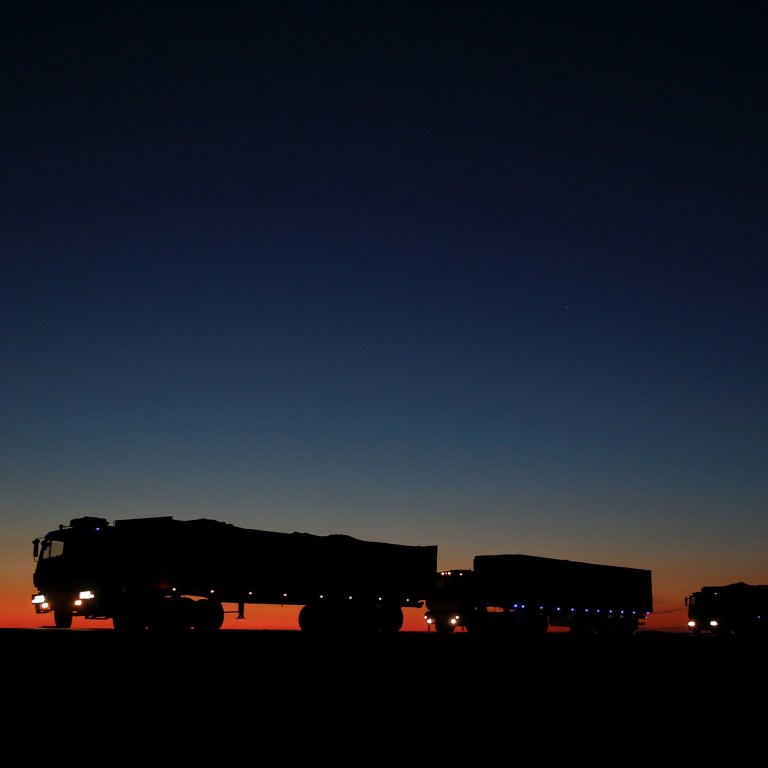
China’s ban on Australian coal causes surge in imports from Mongolia, but difficulties remain
- Beijing’s ban on Australian coal has resulted in increasing imports from Mongolia, meaning the country could retake its position as China’s top supplier
- But Chinese users could bear brunt of the Australian ban due to higher costs for alternatives, transport difficulties and a drop in quality
While politics might have played a role in the decision to shut off Australian coking and thermal coal, the practical difficulties in doing without it may force a rethink of the ban over time, analysts said.
Coal from Mongolia, which borders China to the north, is the most obvious replacement for Australian coal, particularly due to the inability of suppliers located further away – such as the United States, Russia and Canada – to meet a short-term increase in demand, S&P Global Platts said in a recent update.
But while users in northern China will largely be able to make the change, those in southern China will find it more difficult to do so because of the logistical difficulty and expense of transporting coal from Mongolia. This is likely to force many to rely on more expensive domestic coal if they can no longer access Australian imports.
The landlocked country has been increasing exports to China and is now sending more than 1,000 trucks a day laden with coal
So far, the ban on Australian coal imports has largely been successful, with coal traders turning to supply from other countries, industry sources said. Due to the lack of cost-effective alternatives, analysts expect demand for Mongolian coal to pick up.
“The one bright spot is Mongolia, whose coal quality is a good substitute for generic hard coking coal,” S&P Global Platts’ analysts Jeffery Lu and Yile Weng said in a note on Friday.
“The landlocked country has been increasing exports to China and is now sending more than 1,000 trucks a day laden with coal.”
The increasing use of Mongolian coal might allow the country to retake its position as the top supplier of the commodity to China, particularly coking coal used in steelmaking.
Mongolia slipped from the top spot earlier this year after lockdowns and border closures cut production and disrupted supply chains.

07:58
City of Smoke: A Mongolian activist and her fight to make air breathable in Ulan Bator
Simon Wu, commodities market analyst for consultancy firm Wood Mackenzie, said the stronger political relationship between China and Mongolia favoured the use of Mongolian coal.
China and Mongolia are due to increase bilateral trade after Mongolia agreed to cut tariffs on 366 categories of Chinese exports, including aquatic products, fruit and vegetables and chemical products last week following its accession to the Asia-Pacific Trade Agreement (APTA).
China’s Ministry of Commerce said Mongolia would enjoy reciprocal tariff reductions in line with the agreement and added that Mongolia’s accession to APTA could open up more opportunities for Belt & Road Initiative projects.
The steel mills that relied heavily on Australian coking coal before will have to make hard choices, and currently only Mongolian coking coal is widely available
But Chinese users could bear the brunt of the Australian ban due to higher costs for alternative coal, transport difficulties and a drop in quality.
“Mongolian coking coal is already widely used in China, especially by Hebei steel mills [in northern China]. However, the steel mills that relied heavily on Australian coking coal before will have to make hard choices, and currently only Mongolian coking coal is widely available,” Wu said.
For several utilities in the southern part of China, importing thermal coal makes more sense than relying on Mongolia or domestic sources, especially when contract prices are low and logistics easier, S&P Global Platts thermal coal expert Deepak Kannan said.
Seaborne cargo can be delivered directly to southern Chinese ports while rail-transported coal from Mongolia and other parts of China are subject to delays caused by accidents and heavy traffic on main freight rail lines.

01:00
16 miners killed, one rescued after fire in coal mine in Chongqing, China
The low availability of alternative sources for short-term demand will force Chinese steelmakers to use more expensive domestic coking coal, hurting profit margins in the process, Lu and Weng said in their note.
For example, alternative sources from Canada, the US, Mozambique and Russia are already overbooked or in short supply. Moreover, it takes too long for the coal to arrive – at least 21 days from western Canada and 45 days from the US, the latter meaning orders placed in the next few weeks would not be delivered until late December or early January.
“For Chinese buyers seeking spot [on-demand] cargoes to cover immediate needs, this is too long to wait,” Lu and Weng said.
In addition to limited alternative import options, quality concerns are another factor that could hurt users in China.
“Australian premium hard coking coal has a number of sought-after attributes, including high coke strength after reaction, low sulphur and low ash, which only a few countries can offer,” Lu and Weng said.

03:05
China vows carbon neutrality by 2060 during one-day UN biodiversity summit
“A number of steelmakers told Platts that while 100 per cent self-sufficiency remains a possibility, the absence of high-quality Australian grades to blend [with other coal] would reduce production efficiency in the steelmaking process, leading to lower profit margins.”
The price of coking coal using seaborne delivery has fallen sharply since the start of the ban on Australian coal imports, making it more attractive to Chinese steel mills.
Australia, in the interim, is working hard at finding alternative markets for its commodities exporters with no end in sight to its deteriorating relationship with China.
For example, Australia’s trade marketing agency Austrade is looking to Latin America for new markets. It recently announced a webinar for mining equipment exporters to focus on the continent’s post-pandemic economic recovery, with Australian exports of gold, copper and lithium being increasingly used by the tech sector.

